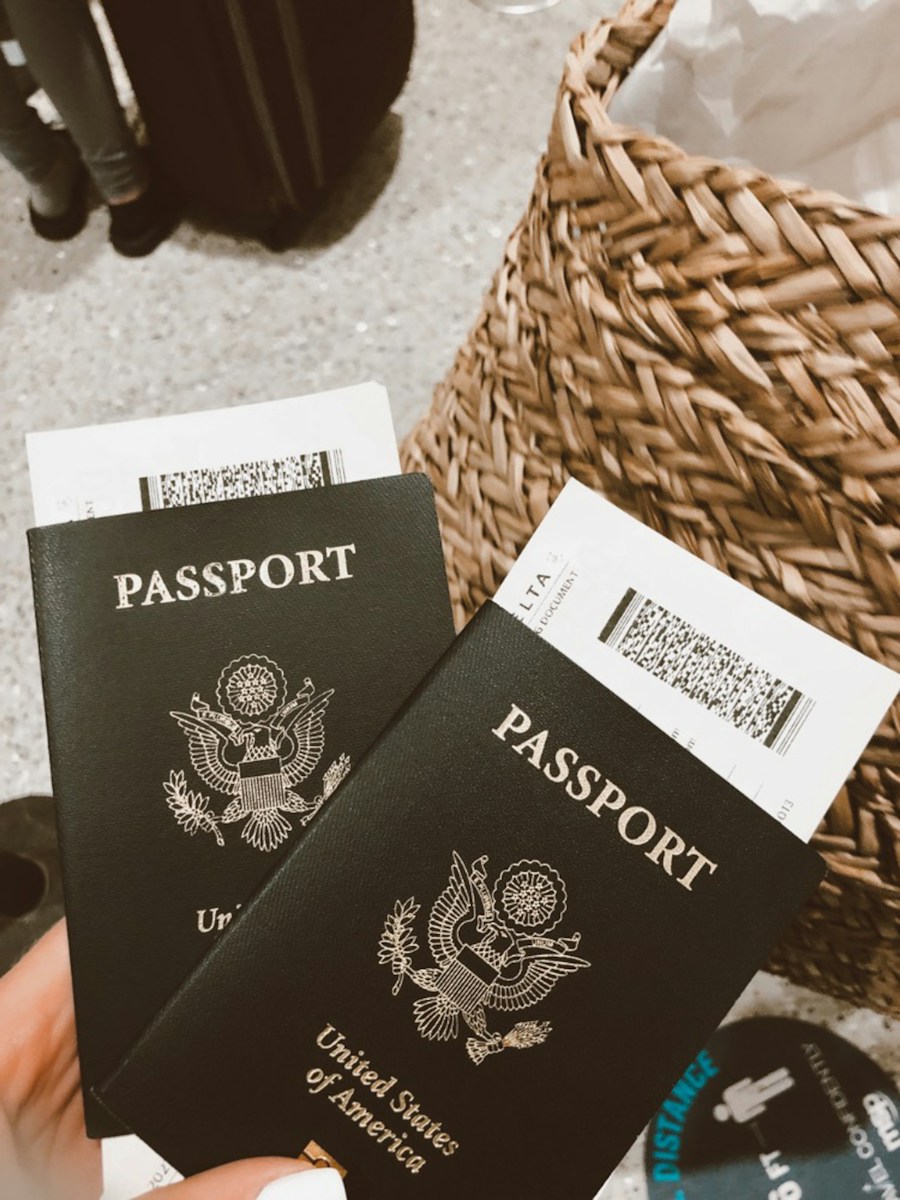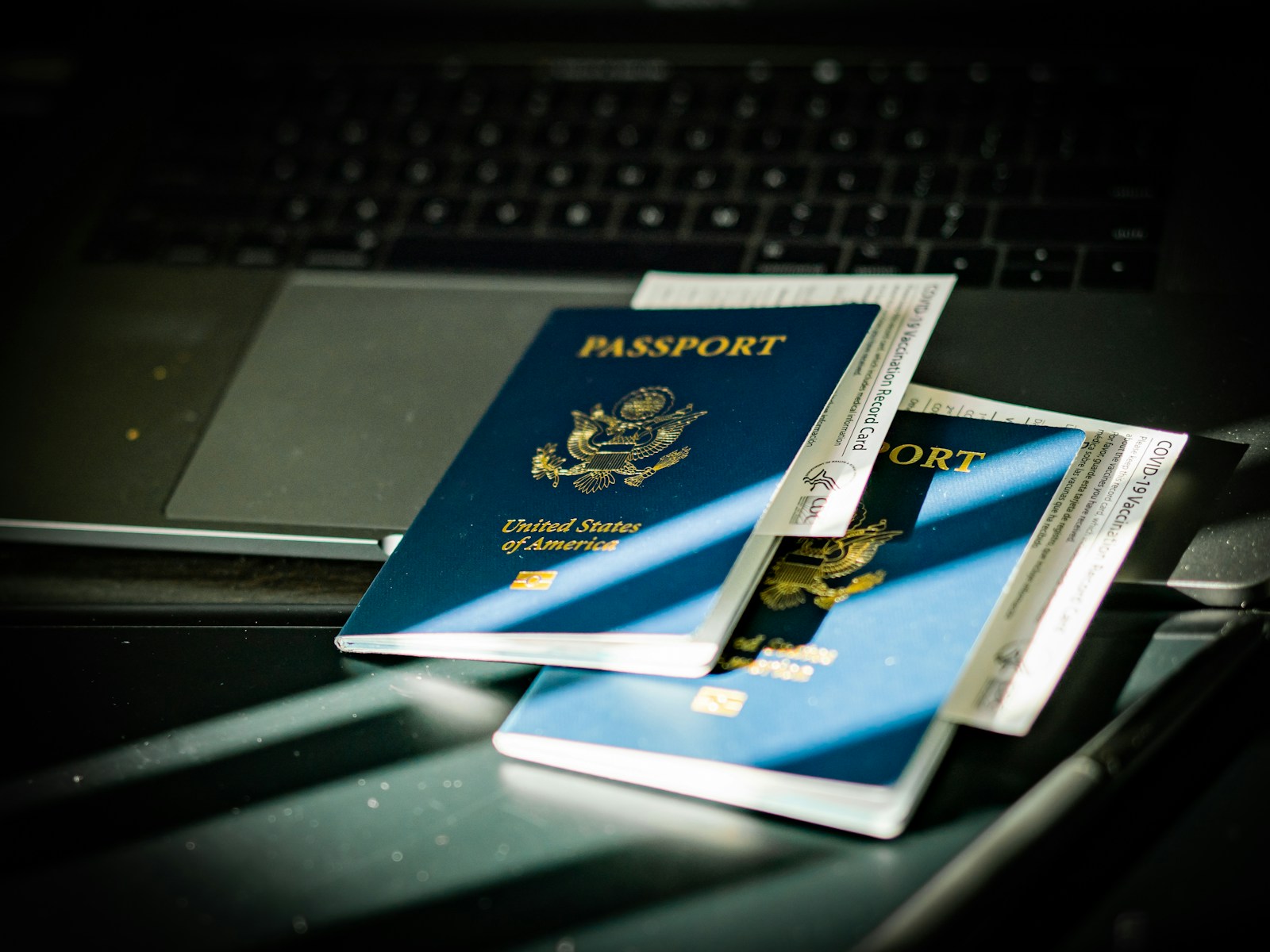Understanding the Basics of Visa Sponsorship for Employment
Visa Sponsorship for Employment: A Guide to Understanding the Basics
If you are an international worker seeking employment in a foreign country, understanding the concept of visa sponsorship is crucial. Visa sponsorship for employment is a process by which an employer in a foreign country agrees to sponsor a foreign worker by providing a job offer and supporting their application for a work visa or permit. This sponsorship is essential for individuals who wish to work legally in a country that requires a valid work visa for foreign employees.
To start the process of visa sponsorship, an employer must demonstrate that there is a genuine need for a foreign worker to fill a specific job position. This often involves showing that there are no suitable candidates available locally or within the country. Once the job position is deemed eligible for visa sponsorship, the employer can proceed with the necessary steps to support the foreign worker’s visa application.
Employment-based visa sponsorship can vary depending on the country’s immigration laws and policies. In the United States, for instance, employers may sponsor foreign workers through various employment-based visa categories, including the H-1B visa for skilled workers, the L-1 visa for intracompany transferees, or the O-1 visa for individuals with extraordinary abilities in their field.
To be eligible for visa sponsorship, foreign workers typically need to possess specific qualifications and meet certain criteria set by the immigration authorities. These criteria may include educational requirements, work experience, and English language proficiency. Additionally, the employer may need to demonstrate that they will compensate the foreign worker with a fair salary and provide appropriate benefits and working conditions.
The responsibility of the employer in the visa sponsorship process is significant. They must provide the necessary documentation to support the foreign worker’s visa application, including a detailed job description, employment contract, and evidence of the company’s financial stability. The employer also needs to comply with all legal obligations and requirements set by the immigration authorities, such as filing the necessary petitions and fees on behalf of the foreign worker.
Visa sponsorship for employment offers several benefits for both the employer and the foreign worker. For employers, it provides access to a broader talent pool and allows them to fill crucial positions that might otherwise remain vacant. It also enables companies to leverage the unique skills and experiences that international workers bring to the workplace. For foreign workers, visa sponsorship opens up opportunities to work and gain valuable experience abroad, potentially leading to long-term career prospects and personal growth.
However, it is essential to be aware of the limitations of visa sponsorship for employment. The process can be time-consuming and complex, requiring meticulous attention to detail and compliance with immigration regulations. Furthermore, visa sponsorship does not guarantee permanent residency or citizenship in the host country. It is crucial for both employers and foreign workers to understand the specific terms and conditions associated with the sponsored visa category and to seek professional guidance throughout the process.
Visa sponsorship for employment plays a critical role in facilitating the hiring of foreign workers and ensuring compliance with immigration laws. By understanding the basics of this process, prospective international employees can navigate the complexities of visa sponsorship and increase their chances of securing employment opportunities abroad.
Understanding Different Types of Employment-Based Visa Sponsorship
Overview of Employment-Based Visa Sponsorship
Visa sponsorship for employment refers to the process in which a company or employer supports a foreign national’s visa application to legally work and reside in a specific country. It is a means for employers to fill skill gaps and hire qualified workers from other countries. Visa sponsorship typically involves a comprehensive procedure that includes various types and categories based on the specific circumstances and needs of both the employer and the employee.
Types of Employment-Based Visa Sponsorship
There are several types of visa sponsorship for employment, each tailored to specific requirements and qualifications. Some common categories include:
- H-1B Visa: This visa category is for specialty occupation workers, requiring highly specialized knowledge or expertise. It is often used for positions in fields such as engineering, IT, finance, healthcare, and others.
- L Visa: The L visa is for intracompany transferees, allowing multinational companies to transfer their overseas employees to their U.S. branch or affiliate. This visa category is suitable for managers, executives, and workers with specialized knowledge.
- O Visa: O visas are for individuals with extraordinary ability or achievement in the fields of arts, sciences, education, business, athletics, or other significant endeavors.
- EB-1 Visa: The EB-1 visa category is designed for individuals with extraordinary ability, outstanding professors or researchers, and multinational executives or managers.
- EB-2 Visa: This visa category is for professionals with advanced degrees or exceptional ability in their respective fields.
- EB-3 Visa: The EB-3 visa is for skilled workers, professionals, and other workers who do not fall under the EB-1 or EB-2 categories.
- EB-5 Visa: This employment-based immigrant visa is for foreign investors who are willing to invest a substantial amount of capital in a new commercial enterprise in the host country, creating jobs for the local economy.
Choosing the Right Visa Category
Determining the most suitable visa category for employment-based visa sponsorship depends on various factors, including the nature of the job, the qualifications of the employee, and the specific requirements set by the host country’s immigration authorities. It is crucial for employers and foreign workers to work closely with immigration attorneys or professionals who can provide guidance and ensure compliance with immigration laws.
It is also worth noting that visa sponsorship programs may vary among different countries, and the eligibility criteria and application processes can be complex. Therefore, it is essential for both employers and employees to thoroughly understand the requirements and seek professional advice to navigate the process successfully.
Visa sponsorship for employment plays a vital role in allowing companies to hire talented professionals from overseas. By having a comprehensive understanding of the different types of employment-based visa sponsorship, employers can effectively navigate the legal requirements and fill skill gaps with qualified foreign workers in a lawful and ethical manner.
Understanding the Basics of Visa Sponsorship for Employment
READ ALSO: Tourist Visa Sponsorship Letter
What is Visa Sponsorship for Employment?
Visa sponsorship for employment refers to the process in which an employer in one country sponsors a foreign national to obtain a work visa or permit to work in their country. It is a crucial component of hiring international talent and enables employers to fill specific job roles with skilled workers from abroad.
How Does Visa Sponsorship Work?
The process of visa sponsorship involves several steps and requires the collaboration of both the employer and the potential employee. The employer initiates the sponsorship process by submitting an application to the appropriate immigration authorities. This application outlines the details of the job position, the qualifications required, and the reason for seeking international talent.
Once the application is approved, the employer typically receives a certificate or a letter of approval confirming their eligibility to sponsor foreign workers. This certificate is often required as part of the employee’s visa application.
Types of Employment-Based Visa Sponsorship
Various types of visas are available for employers to sponsor foreign workers, depending on the specific needs and circumstances. Some common types of employment-based visa sponsorship include:
- H-1B Visa: This visa category allows employers to hire foreign workers in specialty occupations that require specialized knowledge and a bachelor’s degree or higher.
- L-1 Visa: The L-1 visa enables multinational companies to transfer employees from their foreign locations to work in the United States in managerial, executive, or specialized knowledge positions.
- EB-2 Visa: This visa category is for professionals with advanced degrees or individuals with exceptional ability in the sciences, arts, or business.
- EB-3 Visa: The EB-3 visa is designed for skilled workers, professionals, and other workers who possess at least two years of experience or training.
Requirements and Eligibility for Visa Sponsorship
Both employers and employees must meet specific requirements and meet eligibility criteria for visa sponsorship. Employers must demonstrate that they have a genuine job opening and that they have diligently sought to fill the position with a qualified U.S. worker before considering sponsorship.
Employees, on the other hand, are typically required to possess the necessary qualifications and skills for the job. They must also demonstrate that they have no previous criminal convictions or immigration violations that would make them ineligible for a work visa.
Responsibilities of Employers
When sponsoring a foreign worker, employers have certain responsibilities that they must fulfill. These include:
- Providing accurate and detailed information about the job position, including the duties, requirements, and wages.
- Ensuring compliance with all relevant immigration laws and regulations.
- Paying for the necessary filing fees and costs associated with visa sponsorship.
- Assisting the employee with the visa application process and providing necessary supporting documentation.
- Complying with prevailing wage requirements and offering similar working conditions to both sponsored and U.S. workers.
Benefits and Limitations of Visa Sponsorship for Employment
Visa sponsorship for employment offers various benefits for both employers and employees. For employers, it allows access to a broader pool of talent and provides an opportunity to fill critical skill gaps. It also enables companies to expand their business operations into new markets.
However, visa sponsorship also comes with certain limitations and challenges. The process can be time-consuming and expensive, and there may be limits on the number of visas available within specific categories. Employers must also comply with complex immigration requirements and regulations throughout the sponsorship process.
Visa sponsorship for employment plays a vital role in facilitating the international movement of skilled workers to fill job vacancies. It requires collaboration between employers and potential employees, and success relies on meeting specific requirements and eligibility criteria.
The Responsibilities of Employers in the Visa Sponsorship Process
When it comes to visa sponsorship for employment, employers play a crucial role in the process. It is their responsibility to navigate the complex legal requirements and ensure compliance with the immigration laws of the host country. Here are some key responsibilities that employers must fulfill:
Adherence to Immigration Laws
The foremost responsibility of employers in the visa sponsorship process is to adhere to the immigration laws of the host country. They must ensure that all necessary documentation is completed accurately and submitted within the stipulated time frames. This includes preparing and submitting the appropriate visa application forms, supporting documentation, and filing fees.
Furthermore, employers must stay updated with any changes in immigration regulations to ensure their compliance. This may involve working closely with immigration attorneys or consultants who specialize in employment-based immigration.
Job Determination and Recruitment
Employers must determine whether a position requires sponsorship for foreign workers. This involves conducting a thorough analysis of the job requirements and assessing the availability of qualified domestic workers. If it is determined that there is a genuine need to sponsor a foreign worker, employers can proceed with the recruitment process.
During the recruitment process, employers must follow fair employment practices and comply with anti-discrimination laws. They must make a good faith effort to recruit and hire qualified U.S. workers before considering foreign candidates. This may involve advertising job openings, conducting interviews, and evaluating the qualifications of potential candidates.
Labor Condition Application (LCA)
One crucial step in the visa sponsorship process is the filing of a Labor Condition Application (LCA) with the relevant government agency. The LCA ensures that the employment of the sponsored foreign worker will not adversely affect the wages and working conditions of U.S. workers in similar positions.
Employers must attest to various conditions in the LCA, such as paying the prevailing wage for the position, providing similar benefits to U.S. workers, and not displacing U.S. workers. They must also display the LCA in a visible location at the worksite for a specified period.
Sponsorship and Support
Once the necessary paperwork and approvals are in place, employers must formally sponsor the foreign worker for the employment-based visa. This includes filing the visa petition with the appropriate government agency and supporting the employee throughout the visa application process.
Employers may need to provide additional documentation, such as proof of the company’s financial stability and ability to support the foreign worker. They may also have to assist the employee in obtaining other necessary documents, such as a medical examination or police clearance certificate.
Maintaining Compliance
Employers have an ongoing responsibility to maintain compliance with the terms and conditions of the visa sponsorship. This includes ensuring that the foreign worker continues to fulfill the requirements of their employment, such as job duties, work location, and work hours.
In addition, employers must closely monitor and adhere to any reporting requirements imposed by immigration authorities. This may involve reporting changes in the foreign worker’s employment status, such as promotions or terminations, to the relevant government agencies.
Employers bear significant responsibilities in the visa sponsorship process. By fulfilling these responsibilities, they can navigate the complexities of immigration laws, attract skilled foreign workers, and contribute to their company’s growth and success.
Understanding the Benefits and Limitations of Visa Sponsorship for Employment
Benefits and Limitations of Visa Sponsorship for Employment
Visa sponsorship for employment plays a vital role in facilitating the hiring of foreign workers in the United States. It allows employers to fill critical positions with skilled professionals from other countries who possess the necessary expertise and qualifications. However, it is important to understand both the benefits and limitations of this process.
One of the key benefits of visa sponsorship for employment is access to a broader talent pool. Employers can tap into the global workforce and attract highly skilled individuals who may not be available locally. This is particularly beneficial for industries with a shortage of skilled professionals or specialized knowledge. By sponsoring foreign workers, companies can bring in fresh perspectives, diverse skill sets, and unique experiences, which can contribute to innovation and growth within their organizations.
Another benefit is that visa sponsorship allows employers to retain talent. When a company invests time and resources in sponsoring an employee’s visa, it demonstrates a commitment to their professional development and growth. This can lead to increased employee loyalty and reduced turnover. Additionally, sponsoring a visa for an employee can help create a sense of stability and security, as it provides legal authorization to work and live in the United States.
However, there are also limitations to visa sponsorship for employment. The process can be time-consuming, complex, and costly for both employers and employees. Employers are required to meet certain legal obligations and undergo a rigorous application process, which includes advertising the job position, conducting interviews, and demonstrating that there are no qualified U.S. workers available for the position. This can be a lengthy and resource-intensive process.
Furthermore, visa sponsorship is subject to strict government regulations and quotas. The number of employment-based visas available each year is limited, and different categories of visas have different requirements and eligibility criteria. This means that not all foreign workers who meet the qualifications may be able to obtain a visa due to these limitations.
Additionally, visa sponsorship may be temporary and tied to the specific job or employer. This restricts the ability of sponsored employees to change jobs or switch employers without going through a new visa application process. This lack of flexibility can make it challenging for employees to advance their careers or explore new opportunities within the United States.
Visa sponsorship for employment offers several benefits, such as access to a wider talent pool and the ability to retain skilled professionals. However, it also comes with limitations, including the complex application process, limited visa availability, and restrictions on job mobility. Employers considering visa sponsorship should carefully weigh the benefits and limitations before making the decision to sponsor a foreign worker.
Conclusion
Visa sponsorship for employment is a process by which employers in the United States sponsor foreign nationals to work and live in the country legally. This article explored the basics of visa sponsorship, the different types of employment-based visa sponsorship, the requirements and eligibility criteria involved, the responsibilities of employers in the process, and the benefits and limitations of visa sponsorship.
Understanding the basics of visa sponsorship for employment is crucial for both employers and foreign nationals seeking new career opportunities in the United States. By comprehending the various visa options available, individuals can choose the one that aligns with their professional goals and personal circumstances.
There are different types of employment-based visa sponsorship, each with its own set of criteria and restrictions. The most common ones are the H-1B visa, the L-1 visa, and the O-1 visa. These visas cater to professionals in specialty occupations, intra-company transferees, and individuals with extraordinary abilities, respectively.
To be eligible for visa sponsorship, foreign nationals must meet specific requirements, including educational qualifications, work experience, and specialized skills. Additionally, they may need to provide evidence of a genuine job offer from a U.S. employer and proof of their ability to support themselves financially during their stay.
Employers play a crucial role in the visa sponsorship process. They must demonstrate that the foreign national they wish to hire possesses the necessary qualifications that cannot be easily found in the domestic labor market. Moreover, they are responsible for filing the appropriate visa petitions, adhering to visa regulations, and supporting their sponsored employees throughout the visa application process.
Visa sponsorship for employment offers several benefits to both employers and foreign nationals. Employers can access a wider talent pool and fill skill gaps within their organizations, while foreign nationals can pursue their career aspirations in the United States. Additionally, visa sponsorship can pave the way for permanent residency and provide the opportunity to live and work in the U.S. on a long-term basis.
However, visa sponsorship also has its limitations. It can be a time-consuming and complex process, with strict rules and regulations that must be followed diligently. Moreover, due to the limited number of visas available each year, there is significant competition among applicants, making the process more challenging.
Visa sponsorship for employment is a vital pathway for foreign nationals to pursue career opportunities in the United States. It allows employers to access global talent and individuals to fulfill their professional aspirations. By understanding the basics, different types, requirements, responsibilities, and benefits and limitations of visa sponsorship, both employers and foreign nationals can navigate the process effectively and achieve their desired outcomes.
Originally posted 2024-02-03 15:04:14.



